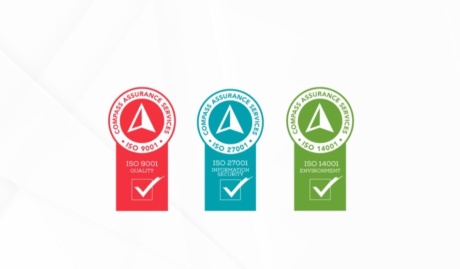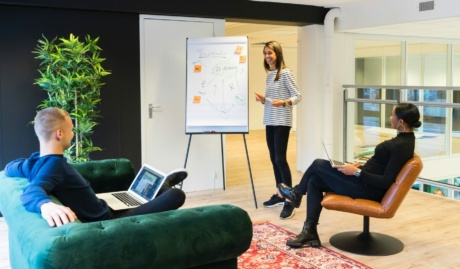Technology is an integral part of how non-profit organisations operate, communicate, and deliver their missions. However, the adoption of new technologies isn’t always smooth sailing. Many non-profits face a significant challenge: the digital divide among their stakeholders. This divide can exist between staff members, volunteers, and even beneficiaries, potentially hindering the organisation’s efficiency and impact.
But with the right strategies, your non-profit can bridge this digital divide and ensure that everyone in your organisation can benefit from technological advancements. Let’s dive into some practical approaches to make technology adoption more inclusive and effective.
Understanding the Digital Divide in Non-Profits
First, let’s get clear on what we mean by the “digital divide.” In the context of non-profits, it refers to the gap between those who have the skills and confidence to use digital technologies effectively and those who don’t. This divide can stem from various factors:
- Age differences (e.g., older staff members may be less comfortable with new tech)
- Educational background
- Access to resources (some team members might not have reliable internet at home)
- Prior exposure to technology
The impact of this divide can be significant. It can lead to communication breakdowns, inefficiencies in program delivery, and even frustration among team members. Ultimately, it can hinder your organisation’s ability to fully leverage technology to further its mission.
Surprisingly, one counter-intuitive observation from many years of working with non-profits is that the younger generation, although often extremely proficient with mobile apps, can sometimes struggle with using software on a computer. A clear demonstration of the impact of prior exposure to certain technologies and not others.
Assessing Your Organisation’s Digital Landscape
Before you can bridge the divide, you need to understand where it exists in your organisation. Here’s how to get started:

- Conduct a skills assessment: Create a survey to gauge the technology comfort levels of your staff and volunteers. Ask about their familiarity with different tools
- Hold focus groups: Bring together small groups to discuss technology use in more depth. This can reveal nuances that a survey might miss
- Observe and analyse: Watch how different team members interact with your current technologies. Are there particular tools or processes that seem to cause frustration?
Remember, the goal isn’t to judge or criticise, but to understand where support is needed most.
Developing a Training Strategy
Once you’ve identified the gaps, it’s time to fill them. A clear training strategy is key:
- Create tiered training programs: Not everyone starts at the same level. Offer beginner, intermediate, and advanced tracks for different skills
- Use diverse training methods: People learn differently. Offer a mix of
• In-person workshops for hands-on learners
• Video tutorials for visual learners
• Written guides for those who prefer to read at their own pace
• Peer-to-peer sessions where team members can learn from each other
- Implement ongoing support: Learning doesn’t stop after one training session. Set up a help desk, create an internal knowledge base, or designate “champions” who can provide ongoing assistance
Leveraging User-Friendly and Accessible Technologies
Choosing the right tools can make a big difference in adoption rates:
- Prioritise intuitive interfaces: Look for technologies with clean, straightforward designs. The less cluttered and complicated, the better
- Ensure accessibility: Choose tools that offer features like screen reader compatibility, keyboard navigation, and the ability to adjust text sizes. This isn’t just for those with disabilities – it can make the technology more usable for everyone
- Consider language needs: If your team is multilingual, look for tools that offer multiple language options
Fostering a Culture of Continuous Learning
Creating the right environment is crucial for successful technology adoption:
- Lead by example: Have leadership actively engage with new technologies and share their learning experiences
- Celebrate progress: Recognise and reward team members who make strides in adopting new tools or help others to do so
- Create safe spaces for learning: Host regular “tech playtime” sessions where staff can experiment with new tools without the pressure of immediate productivity
Addressing Infrastructure and Access Issues
Sometimes the divide isn’t just about skills, but access:
- Ensure adequate hardware: If possible, provide necessary devices to team members who need them. It may seem obvious, but no-one will easily learn a new system if their computer is old, slow and frustrating to use
- Consider BYOD policies: If team members prefer to use their own devices, create clear guidelines and support for this approach. Before allowing BYOD within your organisation be sure to consider the impact on cybersecurity, data privacy and ongoing tech support
- Plan for offline capabilities: For field workers or those in areas with limited connectivity, look for tools that can work offline and sync when a connection is available
Tailoring Adoption Strategies for Different Stakeholder Groups
One size doesn’t fit all when it comes to technology adoption:
- For older team members: Connect new technologies to familiar processes. For example, show how a new CRM system is like an advanced version of the contact lists they’ve always used
- For remote or field workers: Focus on mobile-friendly tools and provide extra support for troubleshooting on the go
- For volunteers: Create quick-start guides that get them up and running with essential functions quickly
Measuring and Monitoring Progress
Keep track of how your efforts are paying off:
- Set clear goals: Define what success looks like. Is it 100% of staff being able to use a specific tool? Improved efficiency in certain processes?
- Regularly reassess skills: Conduct follow-up surveys to see how comfort levels have changed
- Gather stories: Collect anecdotes about how improved technology skills have made a difference in day-to-day work
Conclusion
Bridging the digital divide in your non-profit is an ongoing process, but it’s one that can dramatically improve your organisation’s effectiveness and impact. By understanding your team’s needs, providing comprehensive support, choosing the right tools, and fostering a culture of learning, you can ensure that everyone in your organisation can benefit from the power of technology.
Remember, the goal isn’t to turn everyone into tech experts overnight. It’s about ensuring that technology enhances, rather than hinders, your team’s ability to carry out your mission. With patience, persistence, and the right strategies, you can create a more inclusive and technologically empowered non-profit.































